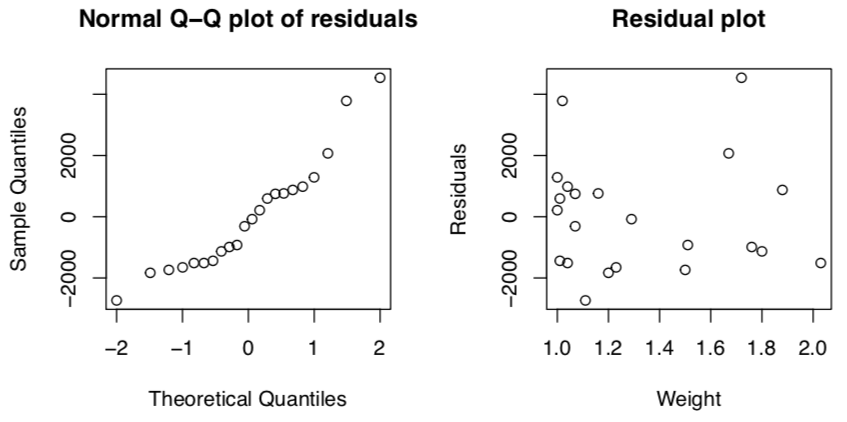Statistical Methods
Table of Contents
Relationships between variables
relationship can be investigated, causality can’t. graphically, you can use scatterplots:

Correlation
correlation: if values of two variables are somehow associated with each other
- positive: higher values of variable 1 are usually associated with higher values of variable 2
- negative: higher values of variable 1 are usually associated with lower values of variable 2
linear if the plotted points are basically a straight line. population linear correlation coefficient is ρ. sample linear correlation coefficient (estimator for ρhoρ) is:
$r = \frac{1}{n-1} \times \frac{\sum_{i=1} n(x_{i} - \bar{x})(y_{i} - \bar{y})}{s_{x} s_{y}}$
interpreting r:
- r = 1: perfect positive linear relationship
- r >0: positive linear relationship
- r ≈ 0: no linear relationship (doesn’t mean no relationship!!)
- r < 0: negative linear relationship
- r = −1: perfect negative linear relationship
Testing ρ = 0
test statistic:
$T_{p} = \frac{R - \rho}{\sqrt{\frac{1 - R^{2}}{n-1}}}$
has under H0: ρ = 0 a t-distribution with n−2 degrees of freedom.
Regression
if there’s a correlation, points can be described by line $y_{i} = \beta_{0} + \beta_{1} x_{i} + error_{i}$
regression equation is $\hat{y} = b_{0} + b_{1} x$
where b₀ and b₁ are least-squares estimates of β₀ and β₁
you want values that satisfy least-squares property (i.e. minimise $\sum_{i} (observed - model)^{2}$)
$\begin{aligned} b_{1} &= r \frac{s_{y}}{s_{x}} &&\text{(the slope)} \\ b_0 &= \hat{y} - b_{1} \bar{x} &&\text{(the y intercept)} \end{aligned}$
Testing linearity
Test:
- H0: β1 = 0
- HA: β1 ≠ 0
The score is:
$t_{\beta} = \frac{b_{1}}{s_{b_{1}}}$
(realisation of test statistic $T_{\beta}$ that has t-distribution with n−2 degrees of freedom under H₀)
Coefficient of determination
Coefficient of determination is proportion of variation in y variable that regression equation can explain:
$r^{2} = \frac{\text{explained variations}}{\text{total variation}}$
Residuals
To check for a fixed standard deviation, make a residual plot. Residuals are estimates for the errors.
residual: difference between observed yi and predicted value $\hat{y}_{i} = b_{0} + b_{1} x_{i}$
$residual_{i} = y_{i} - \hat{y}_{i} = y_{i} - (b_{0} + b_{1} x_{i})$
A residual plot is scatterplot of residuals against x values. Should be no obvious pattern in residuals.
